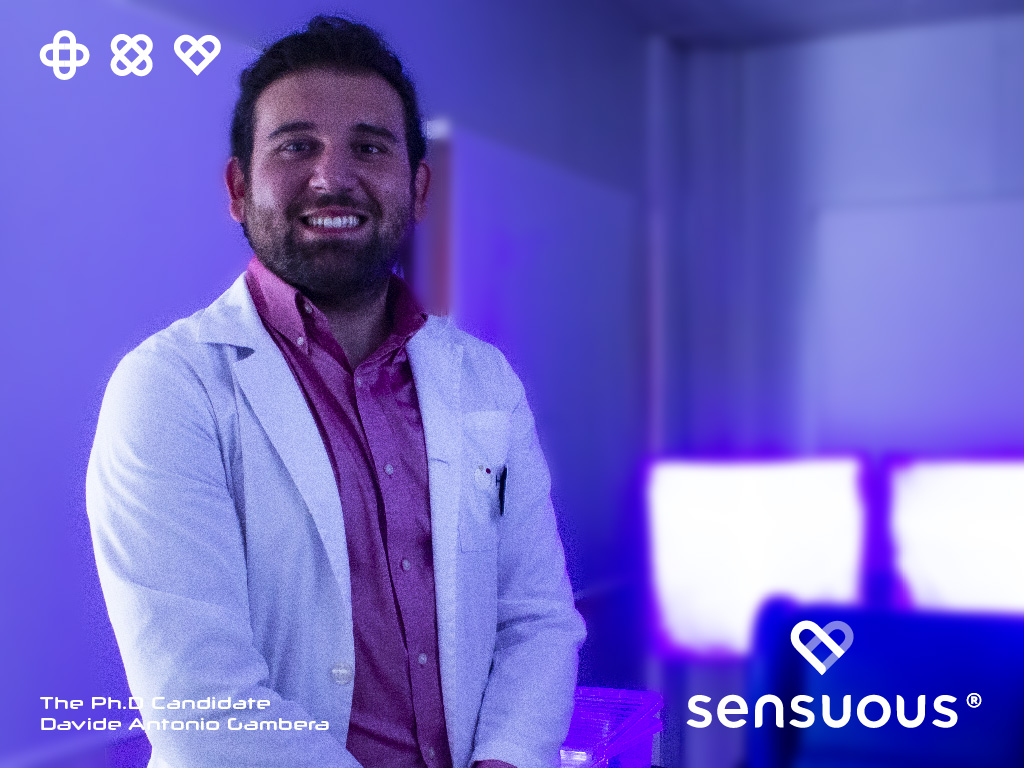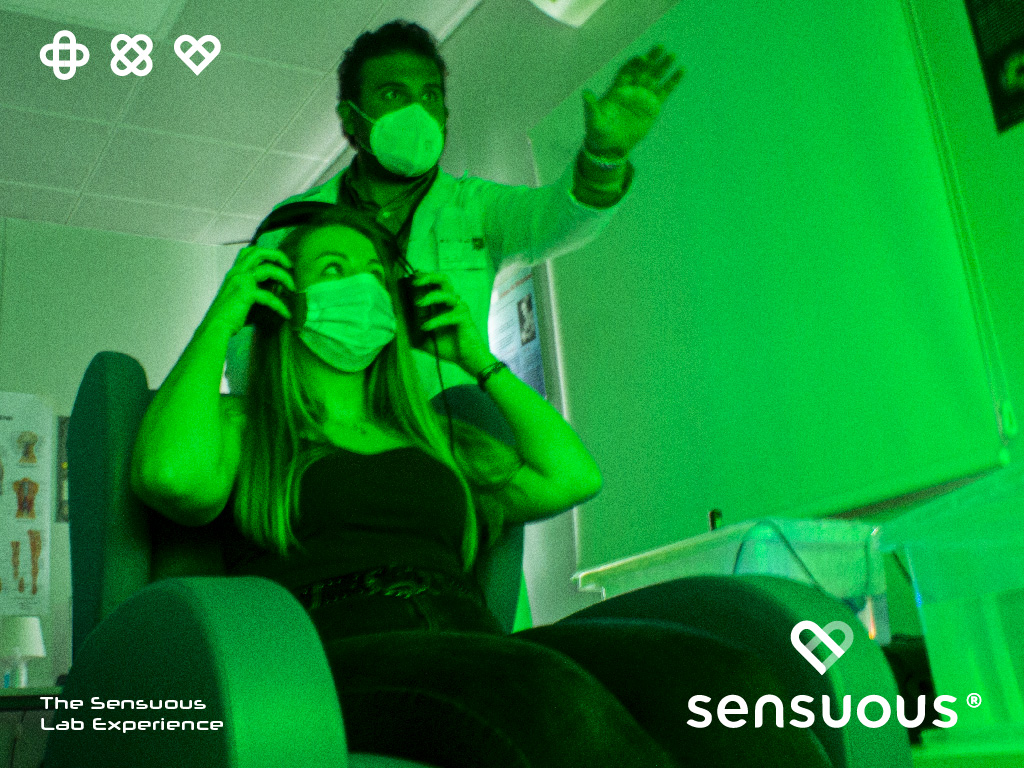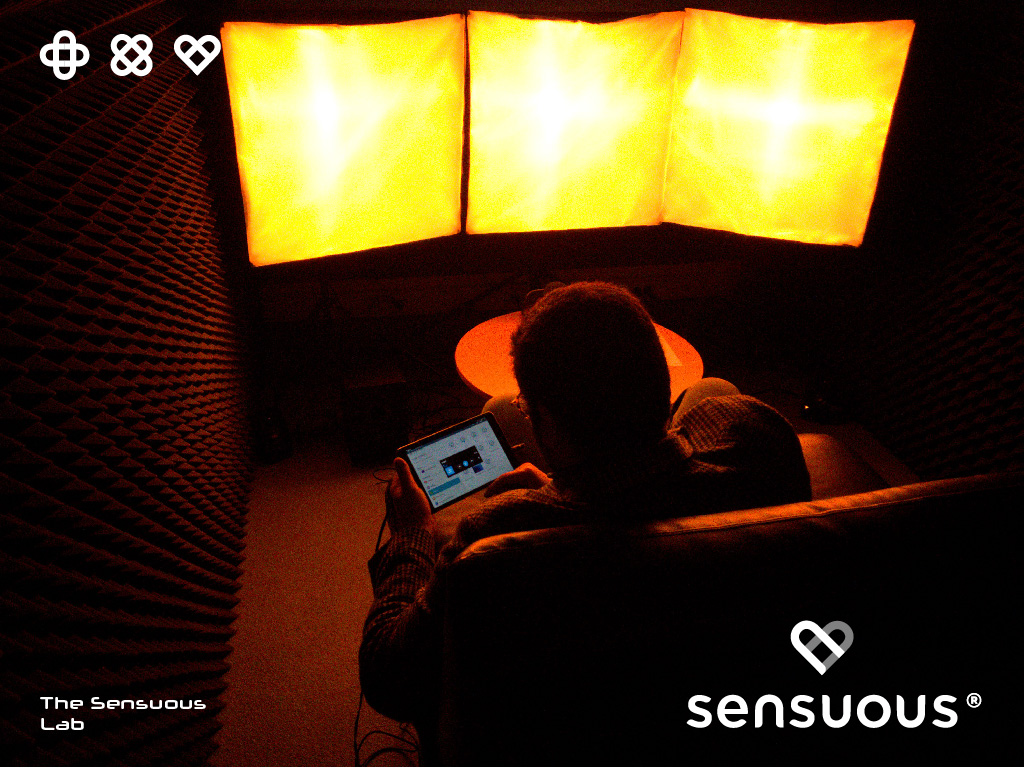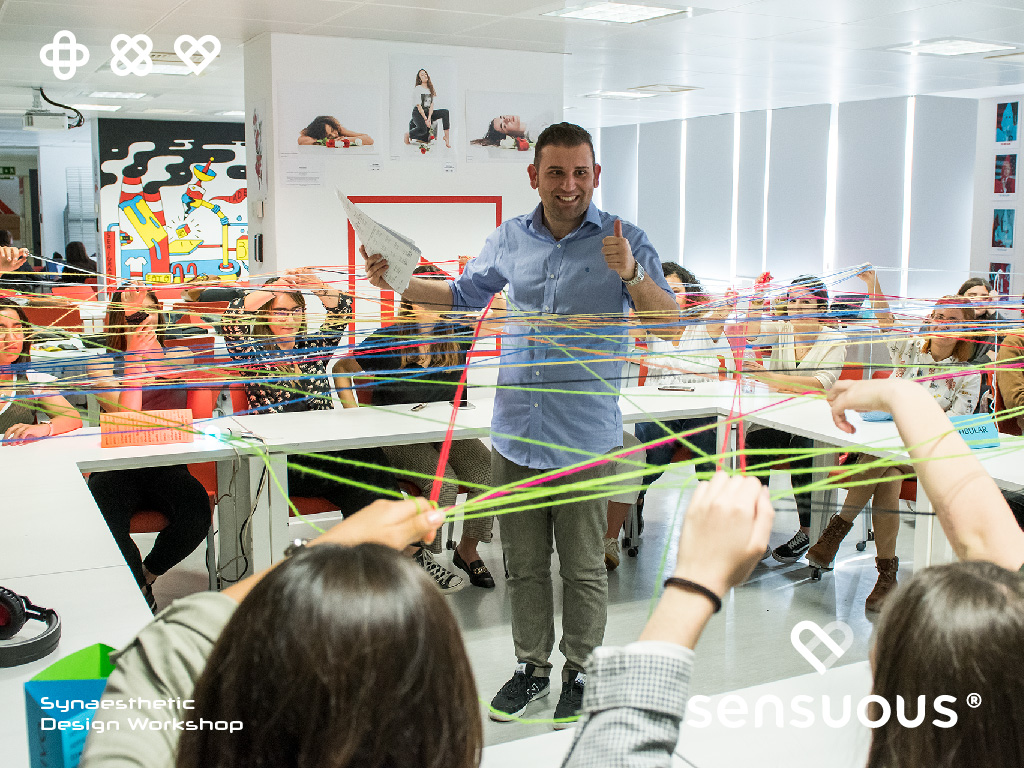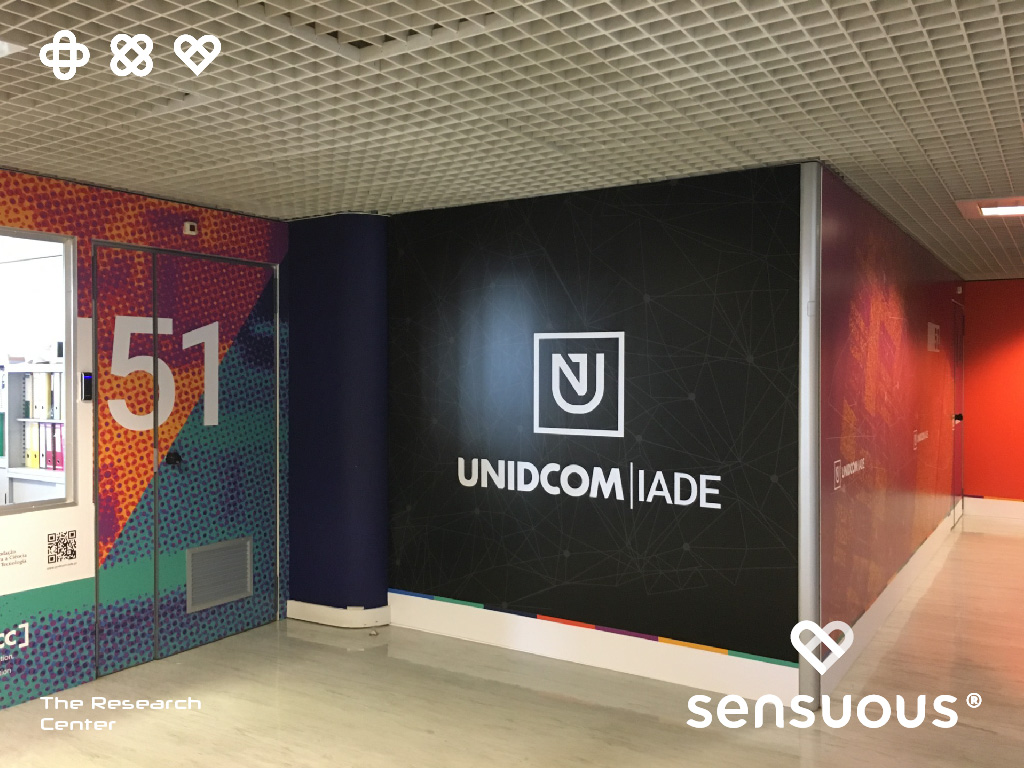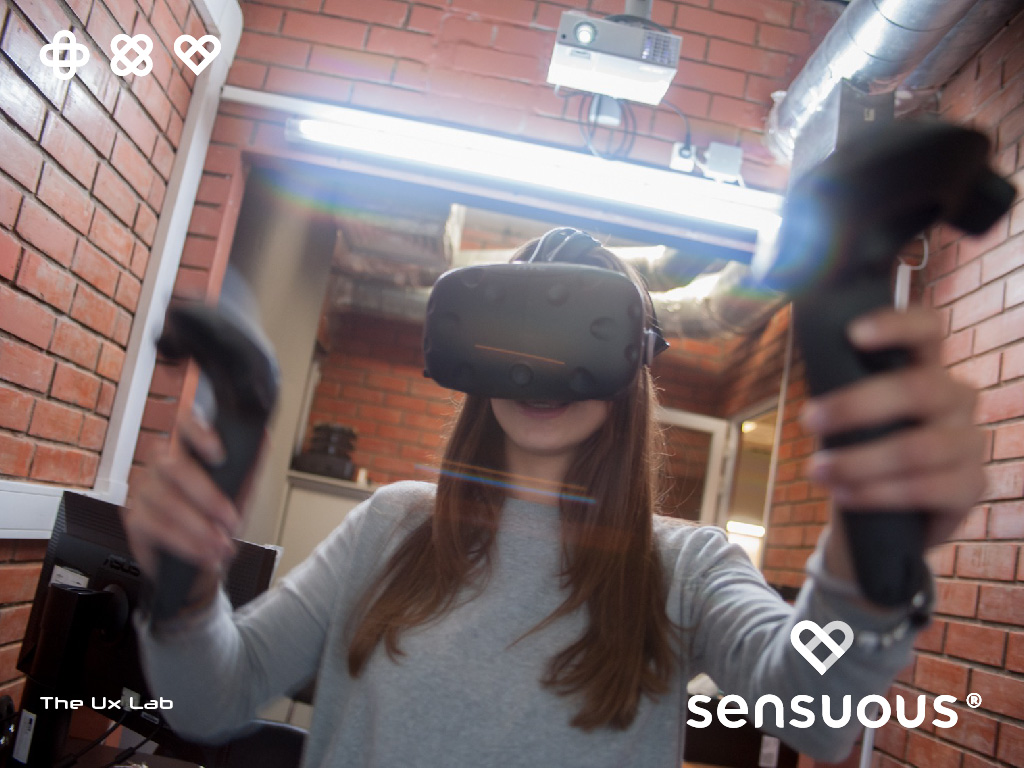Towards a sensuous sustainable health
Basic information
Project Title
Full project title
Category
Project Description
The Sensuous Project is part of the Ph.D. research of Davide Antonio Gambera, taking place in UNIDCOM/IADE Research Center of Design and Communication of IADE, European University of Lisbon. The project is financed with the grant SFRH/BD/129136/2017 given to Davide Antonio Gambera, by the FCT, Fundação para a Ciência e a Tecnologia (Portuguese Science Foundation).
Project Region
EU Programme or fund
Description of the project
Summary
Hospitals are often considered uncomfortable spaces in terms of patients’ experience, and unsustainable places in terms of energetic consumption.
- From a human-centered perspective: healthcare settings are oversaturated by the presence of unpleasant sensory stimuli (as blinding fluorescent lights, environmental noises, uncomfortable temperatures etc.) that become even more unpleasant when we are ill: in case of fever, our sensibility to temperature increases; in case of migraines our sensibility to light and sound increases, in case of nausea our sensibility to smell and tastes increases. (Upali, 2017)
- From a sustainable perspective: hospitals are among the public facilities with the highest level of carbon footprints. It is estimated that hospitals are responsible for the 20% of the energy consumption of the public sector.
The two problems have not necessarily been addressed separately. The Sensuous Project is an ongoing interdisciplinary design research across Design and Neuroscience. This project is part of a Ph.D. research taking place in UNIDCOM/IADE Research Center in Design and Communication of IADE- Universidade Europeia, exploring the potentialities of adopting green solutions for a more sensuous and sustainable health. This research is introducing a holistic approach in which sustainable solution, as smart adaptive lighting, thermal and acoustic isolation, IoT health devices, are being used for the sensory harmonization of healthcare environments. Beyond improving hospital energetic efficiency, sustainable solutions might also benefit the clinical status of admitted patients. The objective of the research is to design sensory stimuli (different sensory setups of light, sound, temperature) in Synaesthetic Environments that might might reduce the perception of pain. In this moment the analgesic effects of sensory stimuli in a controlled synesthetic environment are the subject of laboratory tests in the Neuroscience Lab
Key objectives for sustainability
As suggested by the World Health Organization, sustainable initiatives in hospitals might reduce of the healthcare energy expenses, free up resources could be used for improving patients care, and bring important outcomes in terms of quality of the spaces (WHO, 2017).
Hospital energy consumption is a delicate topic for the environmental sustainability. It has been estimated that represents almost the 20% of all public sector energy consumption in the State of Victoria (Australia). The same scenario is predictable to be similar in most of the developed countries. (The Victorian Auditor General’s Office, 2012).
Specifically, has been observed that half of the hospital direct energy consumption is caused by heating, ventilation and air conditioning (ventilation and temperature control are important to reduce the risks of infections) lighting and equipment are responsible for the other half. (Burger, 2012).
Healthcare committee are under the pressure of different stakeholders to reduce their carbon footprint and adopt sustainable solutions (Health Research and Educational Trust, 2014). Nevertheless, most of the resource are invested in patients safety related innovation without giving much attention on environmental sustainability.
It is commonly believed that the energetic efficiency of buildings is just a goal in terms of environmental sustainability or, in second analysis, a solution to break down the energy costs. The Sensuous Project is investigating how the adoption of sustainable technologies might bring important effects also for patient’s wellbeing. It is expected that the perceived advantages of the adoption of sustainability innovations for health will accelerate the rate of adoption of sustainable innovations in hospitals.
Key objectives for aesthetics and quality
The idea that artefacts should be designed to trigger positive perception in users comes from some of the greatest Bauhaus Masters as Johannes Itten (1888-1967), Josef Albers (1888- 1976), László Moholy-Nagy (1895-1946) and reinforced, years later, by the work of the Italian designer Bruno Munari (1907-1998).
In the field of industrial design, the sensory characterization have the same value of formal and functional aspects. As we experience in everyday life, the quality of artifacts/spaces doesn't depends not only on their function and shape, but also on the way the function it is communicated to our senses. (Haverkamp, 2013). Any object is able to trigger sensory stimuli that have intrinsic expressive qualities. Moreover, these sensory qualities are susceptible to be designed. (Rognoli & Levi, 2005).
In recent years growing has been given on multi-sensory approaches (Del Curto et al., 2010). An optimum design for all senses requires the communication of features via as many sensory channels as possible, assessing the capabilities of each modality, already during the design process. (Haverkamp, 2013). In the field Synesthetic design particular attention is given to phenomena of cross-sensory interactions between the different sensory modalities.
Among the several advantages of adopting sustainable technology in healthcare spaces, great importance has the sensation of of well-being. Sensory comfort and well-being are absolutely guaranteed inside a perfectly isolated environment. Natural acoustic coats materials (such as cork) are able to are able to absorb noise, guaranteeing a high acoustic comfort, due to the absence of acoustic reverberation. Natural materials such as wood and wood fibers transmit a sensation of warmth, and are naturally perfumed, and hygienic. For these reason, they represents optimal solutions for an environment that should have positive effect on health.
Key objectives for inclusion
The World Health Organization defines Health as: "a state of complete physical, mental and social well-being and not merely the absence of disease or infirmity" (WHO, 1946). Nowadays, it is possible to witness a new social, political and institutional awareness regarding the centrality of patients in hospital. The term “humanization” is used to define a strategy for "making more human and compatible with human dignity, the experience of people in hospital". (Vannetti & Monsù Scolaro, 2015). From a social perspective an hospital is considered human, when patients are treated as individuals, and the communication between patients and the staff is very friendly and open. From an environmental perspective, an hospital is human when is intimate, has a familiar appearance, is gracefully finished (Weeks, 1996) and fosters social relations. Healthcare Humanization is a multi-factorial and a multi-disciplinar task. Functional aspects are important to for solving health issues, maximizing the efficiency, guaranteeing safety and hygiene and reducing the exposure to disease risks such as hospital-acquired infections. Moreover, human factors are important to satisfy people’s psycho-physical needs, as offering a pleasant experience, creating calm, respecting privacy and ensuring dignity. Healthcare committees agree with the idea that the benefits of adopting a human-centred design to develop better healthcare solutions that might enhance patients’ recovery and reduce the length of stays, as well as diminishing patient hospital avoidance.Sustainable aspects have to be considered for reducing the environmental impact of healthcare facilities, minimizing costs. Economical aspects has to be consider to guarantee the economical resources needed to ensure optimal healthcare standards.
Innovative character
The innovative aspects of the Sensuous Project can be resumed in two points:
- Salutogentic approach. In hospitals, the design choices are usually focused on the causes that generate diseases. This is typical of the pathogenic approach. (Ulrich, 2000). Nowadays the most important change in healthcare design has been the shift from a pathogenic conception of disease to a wider perspective, focused on patients’ psychological and social needs, with an attention to the impact of the design decision on a larger ecosystem.The Sensuous Project, instead that focusing on the factors that causes disease (pathogenesis) is focusing on the factors that support health and well-being. The term Salutogenesis (Antonovsky, 1979) describes a theoretical model for understanding the entire complexity of wellbeing and illness, regardless of the specificity and the detail on disease. If Pathogenesis reflect a reductionist approach, on the contrary, the salutogenic apprpach can be associated an holistic theory, an approach that takes into account the entirety of the systems and and the developments that cannot be explained by just studying the parts of the system alone.
- Sensory based technological trends. Internet of Senses. The adoption of an holistic Synesthetic approach is aligned with one of the greatest trends in technology. According with a report (Sony Ericsson. 2020), the biggest trend for 2030 will be the shift from IoT Internet of things, to IoS Internet of Senses. This revolution will lead designers to create more immersive environments. Future experiences will be enriched with digital flavors/aromas, more sophisticated haptic stimulations, and immersive interfaces. It is estimated that the introductions of Internet of senses-based services will make society more environmentally sustainable with a higher consumption of digital experiences instead of physical products.

